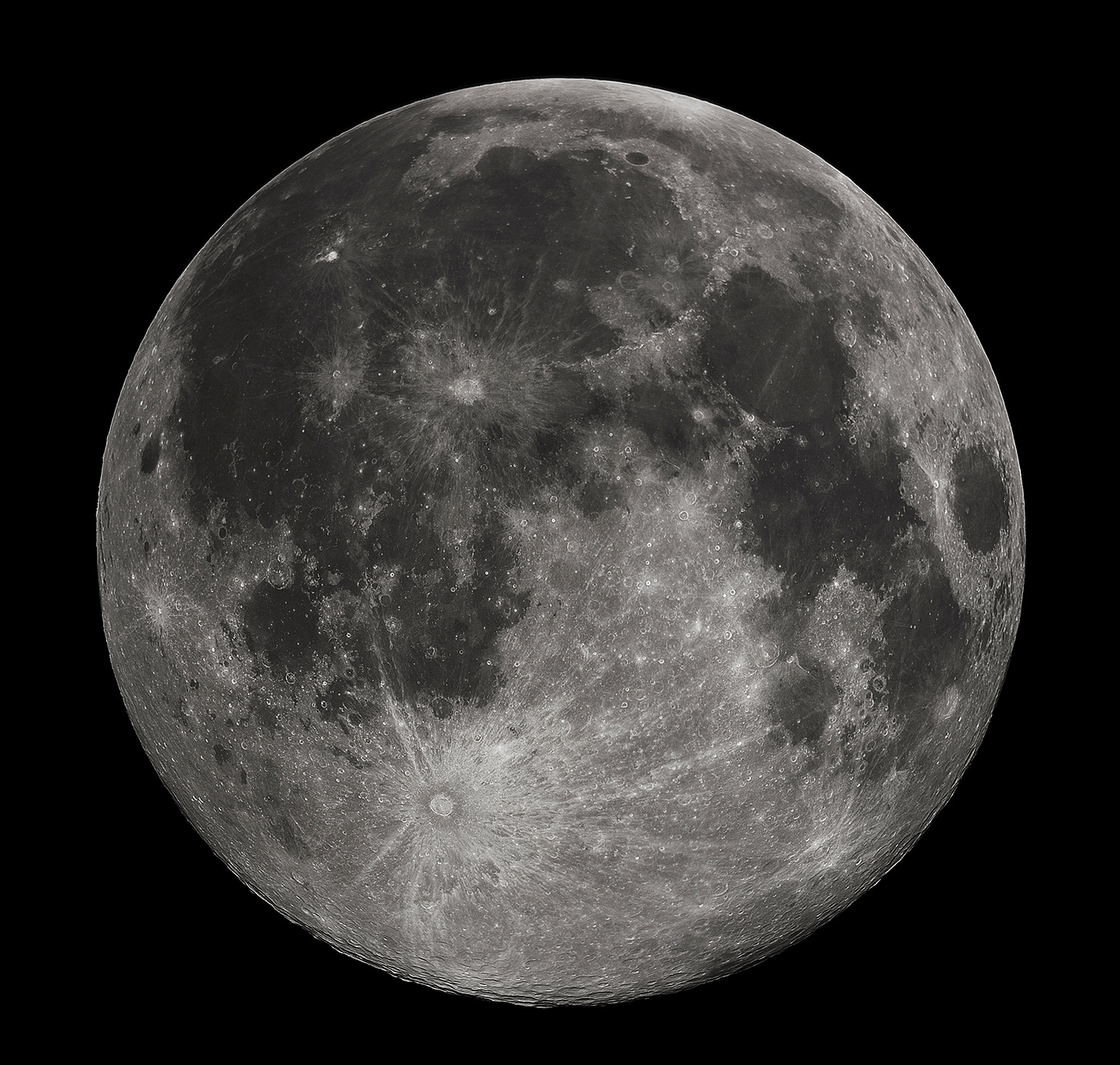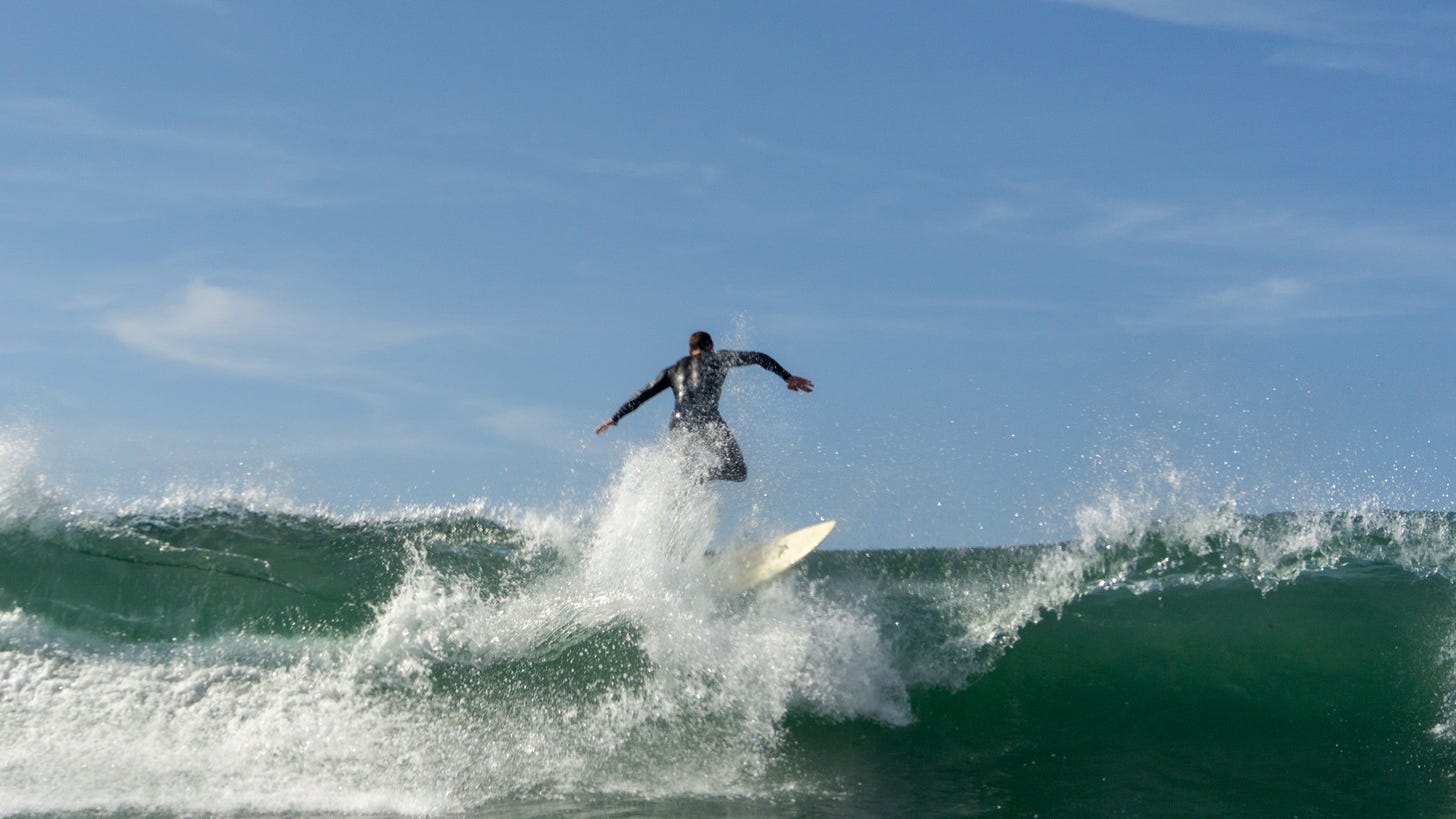What would surfing be like on the Moon?
Let's make some assumptions. First, your Wavestorm-strapped Tesla can somehow get you to the Moon. Second, by the time you arrive, an atmosphere and ocean have formed. Also, there happens to be beaches with well-formed breaks. The next obvious thing would be to spacesuit up and paddle out. But what would it actually be like surfing somewhere with much less gravity?
The Moon's gravity is roughly one-sixth of Earth's, meaning everything that goes up takes considerably longer to come down. This fundamental change of something that we take for granted rewrites the physics of how waves behave from the ground up.
The mathematical relationships governing waves depend heavily on gravitational acceleration. Wave speed in deep water scales with the square root of gravity. With gravity reduced to one-sixth, wave speeds drop by roughly 60%. Wave breaking criteria also change, allowing lunar waves to reach significantly greater heights while carrying the same energy before becoming unstable.

While the exact scaling is complex and depends on which breaking mechanism dominates, waves that break at 6 feet on Earth would reach much greater heights on the Moon - possibly several times taller - before reaching their breaking point. The same storm energy that creates head-high surf here could generate considerably larger faces up there. As looming as they would be, those waves would move and break much more slowly than anything we're used to.
Wave breaking processes would be substantially slower in reduced gravity. A wave that takes a few seconds to break on Earth would take considerably longer on the Moon, stretching that critical moment when the lip pitches forward and crashes down into a more deliberate process. You'd have much more time to position yourself, bail out, or just enjoy the moon tubes..
Those massive but slow-breaking lunar waves would also hit with much less violence. The energy that creates the thunderous impact of a heavy lip comes largely from gravitational acceleration. Reduced gravity means reduced impact force. Getting worked by a lunar closeout might feel more like being gently tumbled than pounded into submission, since the water itself weighs one-sixth as much as it does on Earth.
Since both you and the water experience the same reduced gravity, everything moves in the same slow-motion timeframe - your descent down the wave face, the lip's collapse, even your wipeout. The entire surfing experience becomes more about deliberate positioning rather than the quick reflexes and split-second timing we're used to on Earth.
As for actually surfing these lunar waves, every basic movement would require complete relearning. Paddling becomes an exercise in restraint - each stroke launches you further out of the water than intended. The explosive pop-up that gets you to your feet on Earth would send you well above your board. And every turn becomes an aerial by default, with dramatically extended hang times and surprisingly gentle landings.
While lunar surfing presents fascinating possibilities, the reality would likely involve more time floating helplessly above your board than actually riding waves. Whether that beats sitting in traffic to surf two-foot mush is debatable.
Further Reading:


